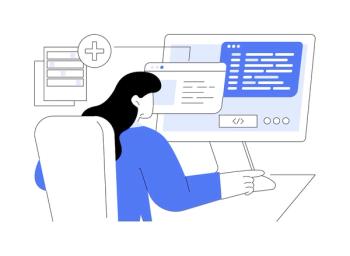
Document carefully in a group practice to avoid raising red flags for auditors
This month's question focuses on the need to be especially careful with codes when working in a large practice. Find out the answer to this pressing coding question.
Q: Our practice has seven internists, one rheumatologist, and one endocrinologist. Referrals to the latter two doctors come in big numbers from the internists. Data for a patient visiting the internist are entered into the electronic health record (EHR) system, and the internist performs the review of systems (ROS). If the internist refers the patient to the rheumatologist or endocrinologist, then that patient is a new patient for the specialist, but the data for that patient already are in the system. How do we code for this scenario? Also, what documentation can we use to prove that the specialist has reviewed the data again?
A: This scenario is common when many providers share the same EHR. In most cases, all providers can see all of the data about a patient that are within the system. It would be easy to fall into the habit of cloning notes while using the EHR, because the capability to bring forward notes from previous visits can seem like a great time-saver. A risk exists, however, that previous notes are not pertinent to the current visit or that documentation will start to become uniform.
The endocrinologist or rheumatologist should review the previous notations, especially the ROS, to see whether anything has changed since the internist last saw the patient. The specialists also should review and update the documentation-not only the ROS but also the past, family, and social history (PFSH). Doing so allows them to concentrate on asking additional questions that are specifically related to their specialty during the office visit. It is not necessary for them to repeat what already is documented. If no change or addition to the information in the prior documentation has occurred, then the existing documentation can be accepted as part of the new documentation of the rheumatologist or endocrinologist.
The EHRs with which I am familiar require a ROS and PFSH in the record for each date of service (DOS). If someone doesn’t review or edit the information, then it will not be noted on the DOS, which is no different than what occurs with a paper chart. If you print out the DOS encounter, then the ROS and PFSH should be printed with it (if this information was entered). If you carry forward the ROS or PFSH, then this information will look cloned.
Most EHRs have a tracking mechanism-a password or a specific notation, such as the name of the provider-that makes it possible to see who has reviewed or edited a particular portion of the medical record. So if a provider prepares an entry based on the DOS, then those services will be noted under his or her login and the signed-off-on entry to close the DOS and bill for it.
The Office of Inspector General (OIG) is assessing evaluation and management services “to identify [EHR] documentation practices associated with potentially improper payments” and states that “Medicare contractors have noted an increased frequency of medical records with identical documentation across services.”
If a history of present illness note is carried over from a previous visit but the chief complaint and present illness do not match the ROS information the patient provided, then the note is not pertinent to the current visit, raising a red flag for OIG to investigate. These “cloned” notes can lead to unnecessary audits.
Medicare carriers and recovery auditor contractors have the authority to pull medical records up to 3 years old if they suspect any fraud or abuse. Because the appearance of identical documentation in medical records is increasing, the OIG has intensified its efforts to assess fraud-related policies and procedures. Some Medicare contractors, such as CGS, state that they won’t pay for cloned documentation. “Cloned documentation will be considered a misrepresentation of the medical necessity requirement for coverage of services due to the lack of specific individual information for each unique patient,” a notice states. “Identification of this type of documentation will lead to denial of services for lack of medical necessity and the recoupment of all overpayments made.”
When multiple individuals share the same EHR, be certain that everyone carefully reviews the previous documentation; makes updates for the current visit, if necessary; and then incorporates the notes into the current day’s documentation.
The author is president of Medical Coding & Reimbursement, Cincinnati, Ohio. Do you have a primary care-related coding question that you would like one of our experts to address in this column? Send it to
Newsletter
Stay informed and empowered with Medical Economics enewsletter, delivering expert insights, financial strategies, practice management tips and technology trends — tailored for today’s physicians.








